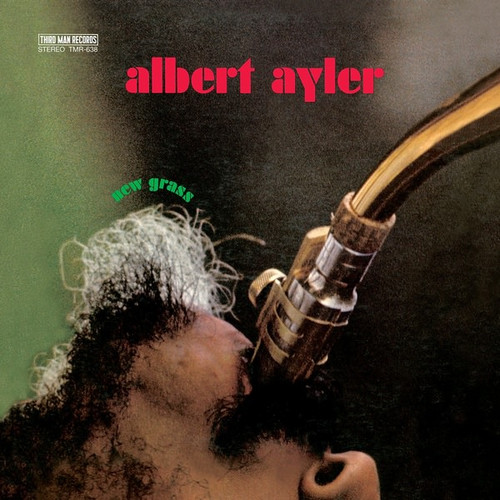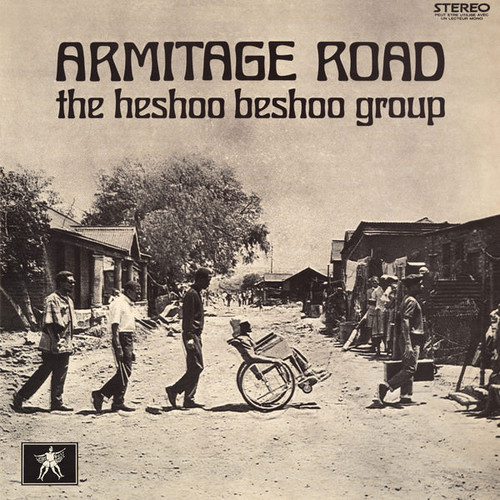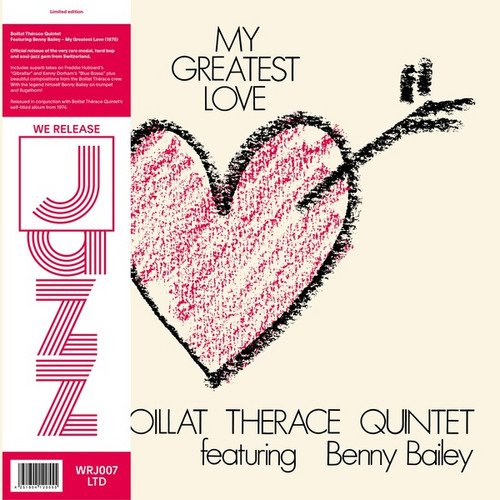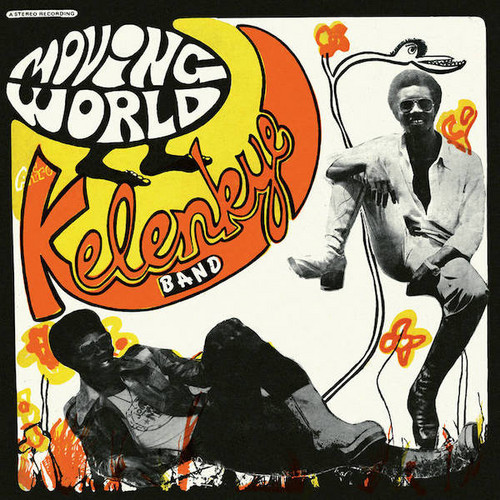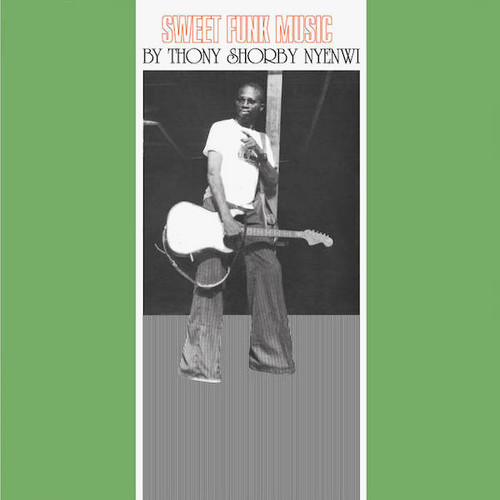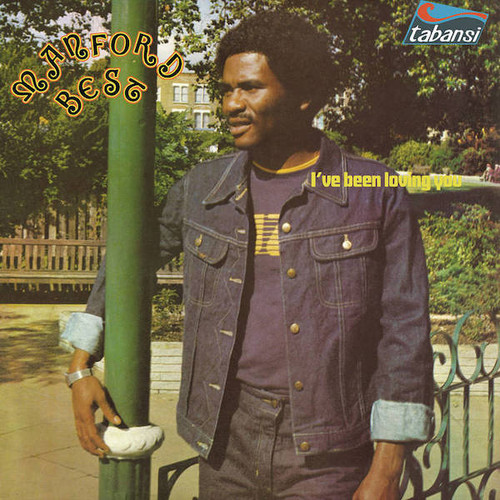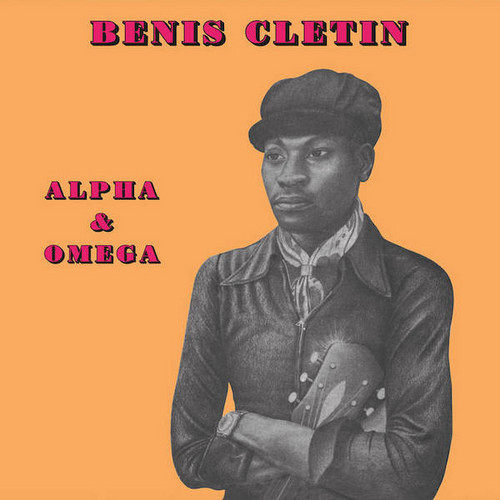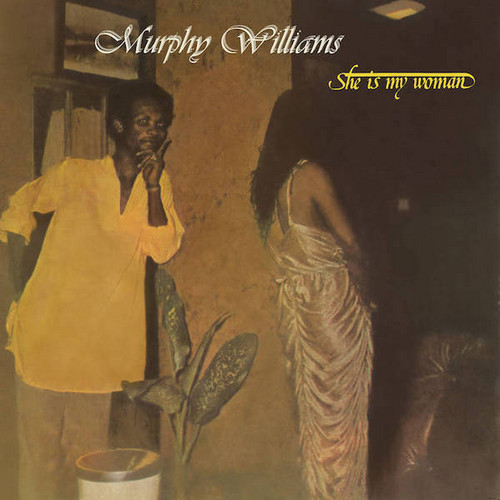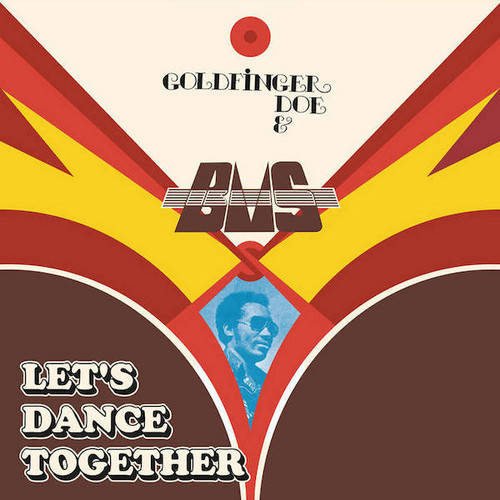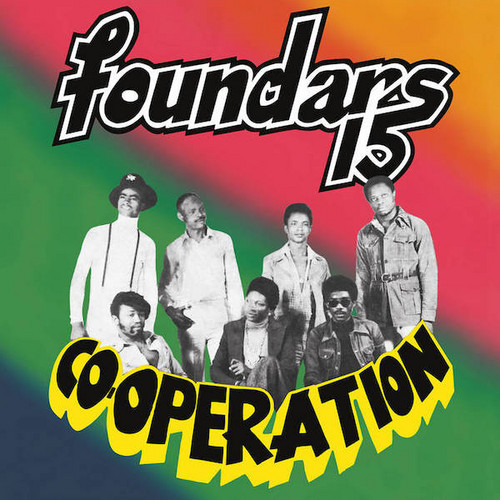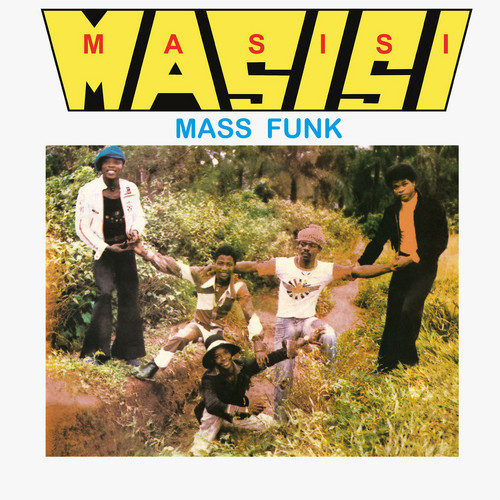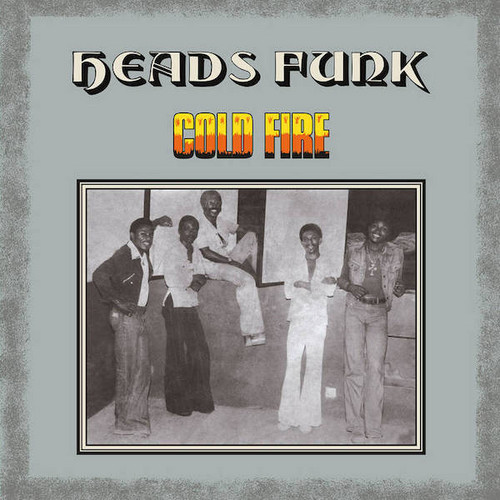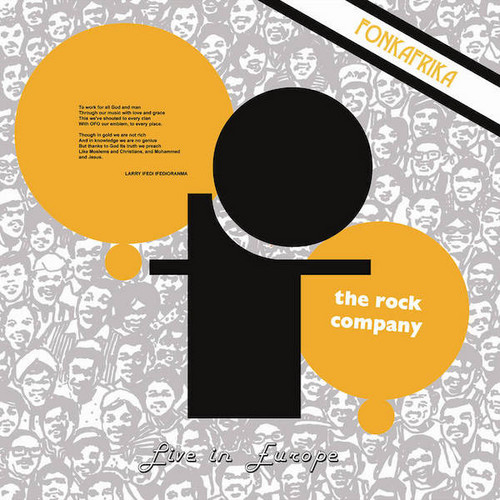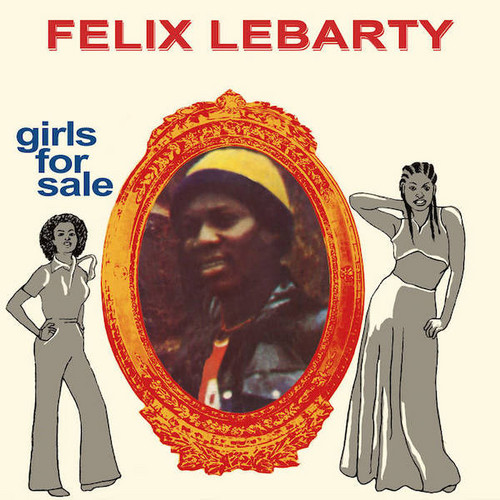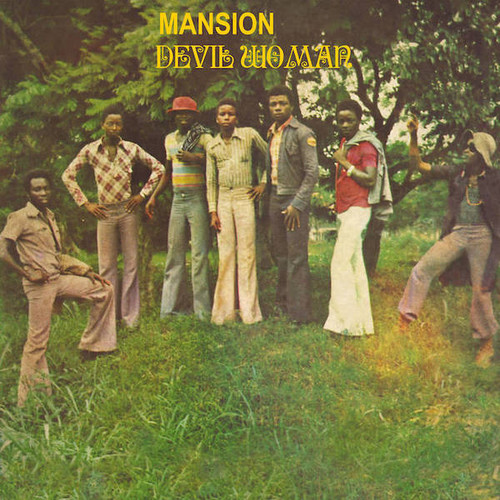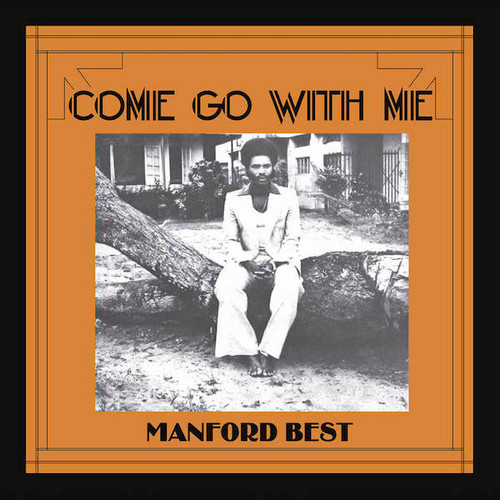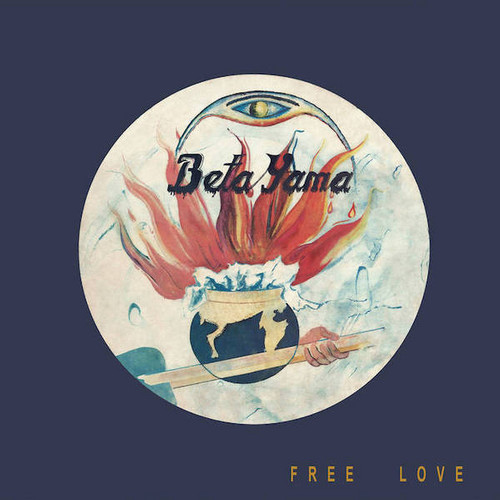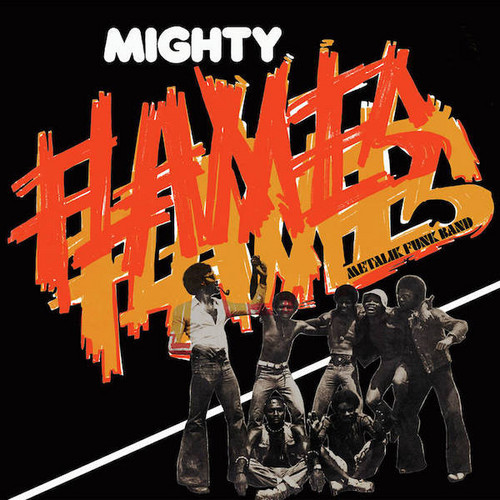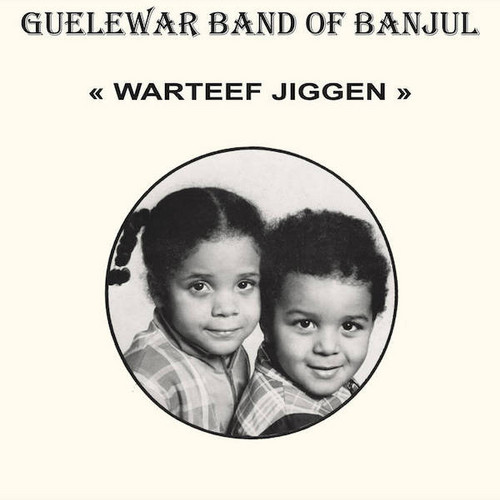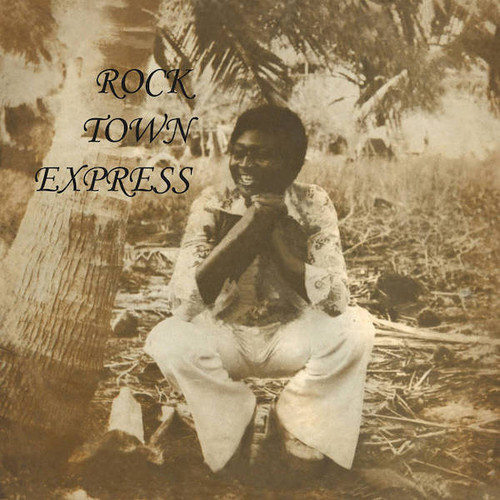Jazz /
New Grass
Albert Ayler's 1969 album New Grass has been misunderstood from the day of its release. The album finds Ayler experimenting with soul music and digging back into his R&B roots (he started his career playing saxophone with Chicago bluesman Little Walter), fusing it with the avant-garde free jazz (the one element of the record which garnered consistent praise) and adding the vocals of Rose Marie McCoy, The Soul Singers and Ayler himself. As if predicting the divisiveness of the record to follow, A…
Armitage Road
**Seminal Spiritual Jazz from South Africa, 1970. Officially licensed and re-mastered re-issue**. With a unique sound founded on a persuasive mix of American and African jazz, Armitage Road, originally released in 1970, was the only studio recording released by South Africa’s Heshoo Beshoo Group. As a highly prized collector’s item, a re-issue and re-appraisal of this lost gem from the apartheid era has been long overdue. Heshoo Beshoo loosely translates from the inter-tribal lingo of the townsh…
My Greatest Love
LP version. We Release Jazz present a reissue from Geneva's Boillat Thérace Quintet, the My Greatest Love album, featuring bebop and hard-bop legend Benny Bailey and available for the first time since 1975. Galvanized by the creation of the Montreux Jazz Festival in the late '60s and lively local scenes, jazz music was healthy and booming in Switzerland in the 1970s. One band that beautifully captured this energy was Jean-François Boillat and RaymondThérace's Boillat Thérace Quintet whose self-t…
Moving World
In 1974, a brash young designer called Augustus Kerry Taylor had an idea. He'd gather together the hottest musicians in Ghana and record an album of the heaviest and funkiest sounds coming out of America. And this time, he wouldn't just design the cover, like he'd done with Fela Kuti, he'd even release it on his new label, Emporium, as well. Local Accra legends Joe Wellington, Jagger Botchway, Leslie Addy, Officer Toro, Oko Ringo, Soldier and Steve answered the call. They were christened the Kel…
Sweet Funk Music
Who said that all Nigerian afrobeat from the 70s was dark and though provoking with a melancholic edge despite the ongoing powerful grooves and a more or less political message denouncing the the methods of the country’s leaders to increase their own wealth and power while the simple people suffer. Well, this 1978 album by bandleader Thony Shorby Nyenwi proves this idea wrong. What we have here is a sacredly rare gem, fetching 300 € for a copy in playable condition. A crown jewel of Nigerian afr…
I've Been Loving You
“I’ve Been Loving You” sees Manford Best finally laying the ghosts of The Wings to rest and emerge as a serious player in the glittering new world of Afro boogie. Recorded in London, with Nigerian super producer, Jake Sollo, at the desk, it is a highly polished collection of disco classics, guaranteed to fill any dance floor in the world. The title track gets the party started with an irresistible bass line and chirpy horn section. Written by Best while he was still in The Wings, the song is unr…
Alpha & Omega
In the mid eighties FM radio stations took over the airwaves in Nigeria. They wanted fresh new styles to play andin creasingly radio personalities like Bisi Olatilo, Ruime Effetie and Shea Martins were turning to reggae. Nigeria’s Freak Father Number One, Benis Cletin, saw the writing on the wall and created his deeply philosophical roots reggae opus, ‘Alpha & Omega’. Benis delivered a set of songs that tapped unashamedly into reggae’s message of peace and love. The title track is a philosophica…
She Is My Woman
She Is My Woman is Murphy William’s loose, funky and spontaneous call to the dance floor. It’s an infectious collection of good-time tunes that the band seem to be enjoying as much as the listener. Williams was a stalwart of the Nigerian music scene, joining Godwin Omabuwa’s Cassanova Dandies at 17 before becoming one of the two lead vocalist of The Apostles from Aba. He was famous for his distinctive four octave voice, a voice that legendary label boss, Godwin Tabansi decided was perfectly suit…
Let's Dance Together
William Onyeabor wasn’t the only Nigerian experimenting with synthesizers in the 70s and 80s. Goldfinger Doe was twiddling knobs too, no more so than on Let’s Dance Together – a prime slab of cosmic Afro boogie funk, recorded with legendary percussionist, Mike Umoh (a.k.a B.M.S.) Goldfinger met Umoh playing with Bongos Ikwue & The Groovies. Bass player Bashiru Musa, was a fellow Groovie too, and when the three hit the studio to record Let’s Dance Together, the groove was already tight and hot. T…
Co-Operation
After years of gigging around the east Nigerian music scene, Foundars 15 finally hit the jackpot when they recruited legendary bass player, Marshall Udo. Charismatic and confident, Udo immediately energised the band, bringing a new funky and psychedelic vibe as well as a bunch of songs he’d workshopped with the Funkees. The tone of the album is set early. Nek Adirika’s searing guitar lick announces ‘We Are On The Move’, a track that is both funky and determined. ‘Co-operation’ is a horn-driven s…
I Want You Girl
In mid-seventies, Nigerian bands came and went with alarming regularity, rising meteorically from the slums to stardom and falling back again just as quickly. Masisi Mass Funk from Anamara State was one such band. But during their brief moment in the stratosphere, they produced a funk gem in I Want You Girl. The band was championed by Ebere Ikoro from the Hygrades. He took them under his wing after an ill-advised collaboration with Soly Dibong. They were originators not imitators, he said. He pr…
Cold Fire
The self-proclaimed funkiest band on the west coast of Africa, the Heads Funk Band, could arguably make that claim for the whole continent. Featuring the slick guitar of Felix ‘Feladey’ Odey, the slinky drumming of Eddie Offeyi and the swirling keyboard chops of Kevin ‘Fortune’ Coburn, nobody was funkier. And that’s not even taking into account the dance floor monsters they were releasing at the same time as Akwassa. Cold Fire was their second album as the Heads Funk Band. Where their first albu…
Live In Europe - Fonk Afrika
OFO The Rock Company (originally known as OFO The Back Company) were Nigeria’s first acid-rock band. Blending Hendrix and Deep Purple with shamanism and a pro-black philosophy, they cut their teeth at Fela Kuti’s Afrika Shrine, developing a fearsome live reputation that intimidated every other band in Lagos. No one wanted to follow the guys from OFO, not even Fela himself. Lead by the charismatic Larry Ifedioranma, OFO The Rock Company considered themselves a musical cult. Their live shows were …
Girls For Sale
Before he was Nigeria's self-proclaimed Mr Lover Boy, Felix Lebarty was an upcoming musician in the country's Edo-Delta region. His big brother, Aigbe, was a legendary Highlife bandleader, but Felix paid his dues playing guitar with Thony Shorby Nwenyi and the Collection of Stars, along with fellow 'star' Mighty Flames bassist, Willy Nfor. Perversely, Girls For Sale was released after Lover Boy, the slick disco album that cemented his place in Nigerian music history. It is a collection of tracks…
Devil Woman
The eastern Nigerian city of Calabar in Cross River State was colloquially known as Canaan City – a place of lush landscapes, alluring women and delicious cooking. When the Biafra War ended it became a land of milk and honey for bands as well, with jumping venues like the Taj Mahal and Luna Nite Club and a label called Clover, set up local entrepreneur Ben Okonkwo, releasing albums by bands like The Doves, The Visitors, Aktion and The Apostles. The youngest band on the Clover roster was Mansion,…
Come Go With Me
With the Super Wings in mutiny and a trail for the manslaughter of his former bandmate, Spuds Nathan, still hanging over his head, Manford Best came out swinging with Come Go With Me. It’s a chirpy, calypso-influenced insight into the state of his mind and his first solo album. Recorded at Godiac Studios with the guys from Rock Town Express and a few of the Super Wings, Come Go With Me was the first album recorded on a new Tascam system that Goddy Oku had just bought back from London. The sound …
Free Love
It’s hard to get a handle on Nigerian musicians Nash Dodoo, Charlie Cuul and Jonas Caulley. In 1980 they released an album of face-melting gospel boogie as the BML chapels. And in the same year, calling themselves the Beta Yama Group, they put out Free Love, a belated love letter to San Francisco’s Summer of Love and an album altogether focused on more worldly concerns. Free Love is a small slice of Haight-Ashbury transported to the Polygram Studios in Lagos. ‘Te Revoir’ is Mamas and Papas jammi…
Metalik Funk Band
The Mighty Flames were a crack bunch of Cameroonian musicians, drawn to Nigeria by the heavy funk sounds booming across the border like musical moths. For a short time in the late sentries they ‘owned’ Port Harcourt, destroying dancefloors with an incendiary sound that burned so heavily that it was phosphorescent. Metalik Funk Band is the band at their most deadly. Willy ‘Pazz’ Nfor is on bass, Nfrackie ‘Jazz’ Song on synth, Didi Lead on lead guitar, Emma ‘Wah Wah’ Baloka on rhythm and Stormy ‘B…
Warteef Jigeen
The Guelewar Band of Banjul are a band quite unlike any other – an explosive mix of soul and funk with local rhythms like Boogaraboo and Ndaga combined with a defiant insistence on singing in their local language, Wolof. They certainly blew a young Youssou N’dour away. He cites them as his biggest influence. Warteef Jigeen marks the point the band found its groove. The title track sets the tone early with parping horns and psychedelic guitar licks. ‘N.T.C. The Gambia’ and ‘Jilana’ seamlessly ble…
Rock Town Express
There was a time in the 1970s when the best band in the Nigeria was actually from Cameroon. Rock Town Express, formed out of the ashes of Wrinkar Experience by Yaoundé boys Edjo'o Jacques Racine and Ginger Forcha, hit it hard, hit it loud and hit it funky. Racine and Forcha had been recruited from Cameroon by Dan Ian and after only six months, left them stranded in Nigeria's troubled east. Their first album as Rock Town Express was released on Ginger Baker's ARC label in 1974. This, their second…
